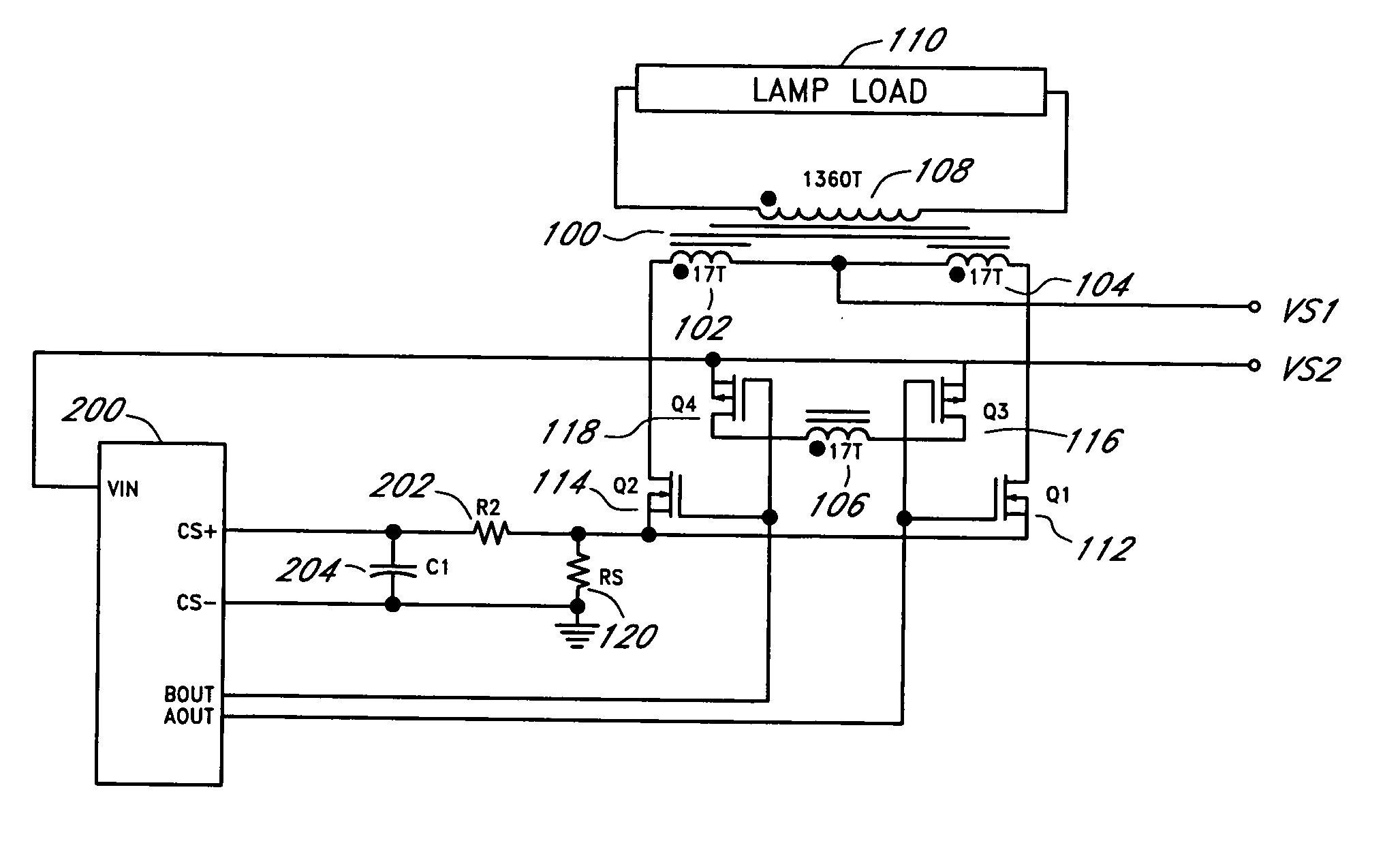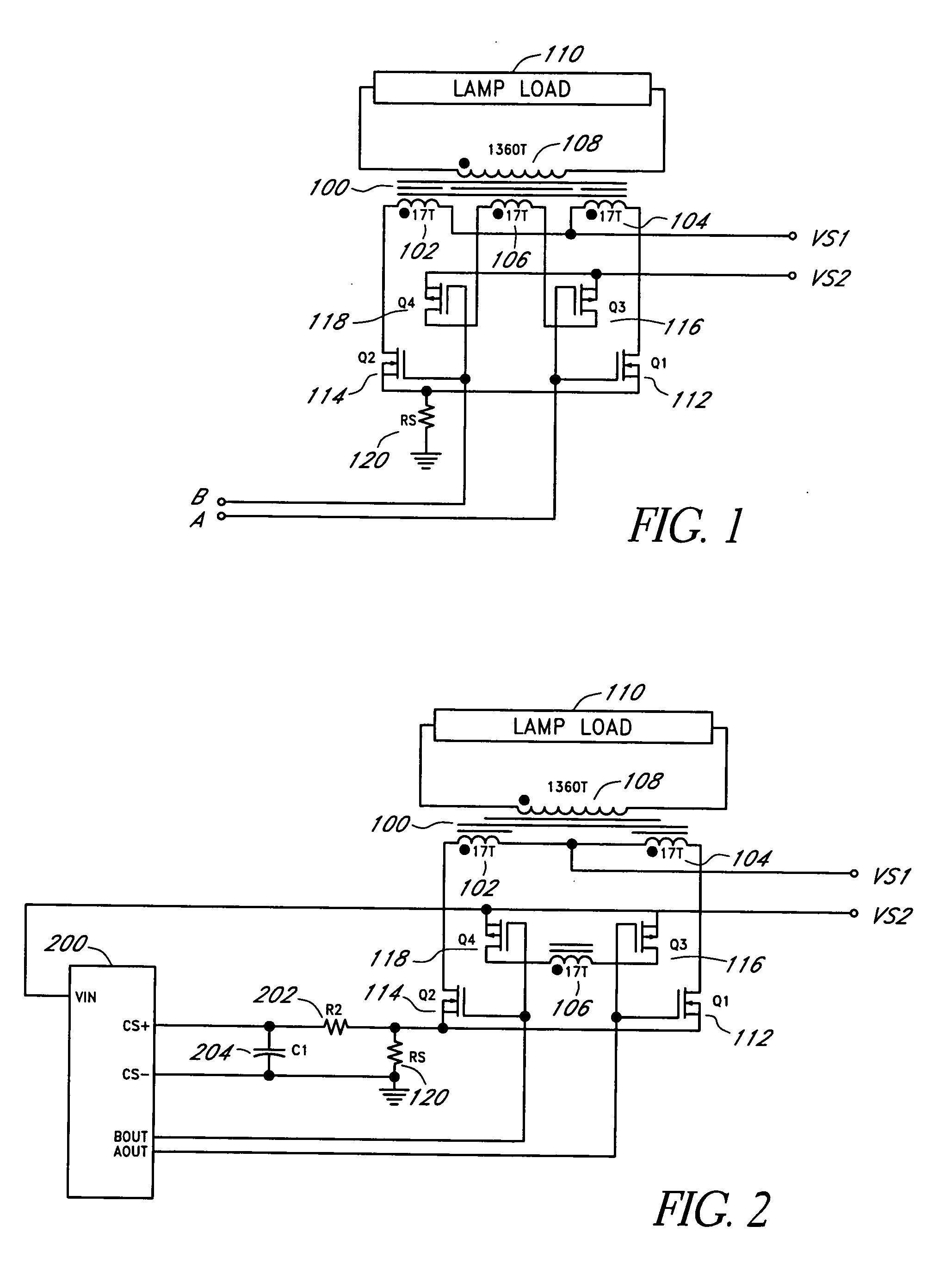Push-pull driver with null-short feature
a technology of push-pull and driver, applied in the direction of electric variable regulation, process and machine control, instruments, etc., can solve problems such as voltage spikes
- Summary
- Abstract
- Description
- Claims
- Application Information
AI Technical Summary
Benefits of technology
Problems solved by technology
Method used
Image
Examples
Embodiment Construction
[0019] Although particular embodiments are described herein, other embodiments, including embodiments that do not provide all of the benefits and features set forth herein, will be apparent to those of ordinary skill in the art.
[0020]FIG. 1 illustrates one embodiment of a push-pull driver with null-short feature. The push-pull driver (or inverter) includes a transformer 100 with a first primary winding 104, a second primary winding 102 and a third primary winding 106. A first terminal of the second primary winding 102 and a second terminal of the first primary winding 104 are commonly connected to a power supply (VS1). A lamp load 110 is coupled across a secondary winding 108 of the transformer 100. The lamp load 110 can include one or more CCFLs in a backlight system for LCD applications.
[0021] The push-pull driver also includes four semiconductor switches (or switching transistors) 112, 114, 116, 118 coupled to the transformer 100. The four semiconductor switches 112, 114, 116, ...
PUM
 Login to View More
Login to View More Abstract
Description
Claims
Application Information
 Login to View More
Login to View More - R&D
- Intellectual Property
- Life Sciences
- Materials
- Tech Scout
- Unparalleled Data Quality
- Higher Quality Content
- 60% Fewer Hallucinations
Browse by: Latest US Patents, China's latest patents, Technical Efficacy Thesaurus, Application Domain, Technology Topic, Popular Technical Reports.
© 2025 PatSnap. All rights reserved.Legal|Privacy policy|Modern Slavery Act Transparency Statement|Sitemap|About US| Contact US: help@patsnap.com


